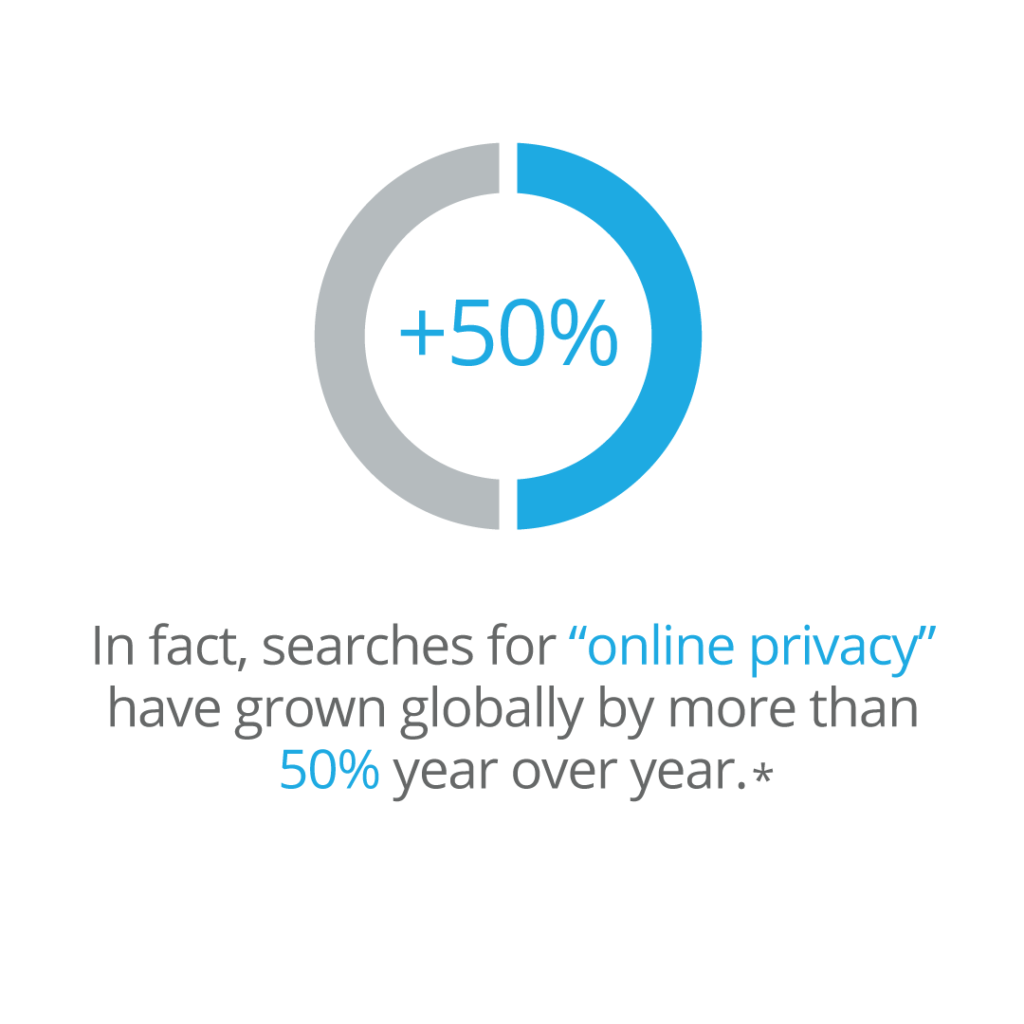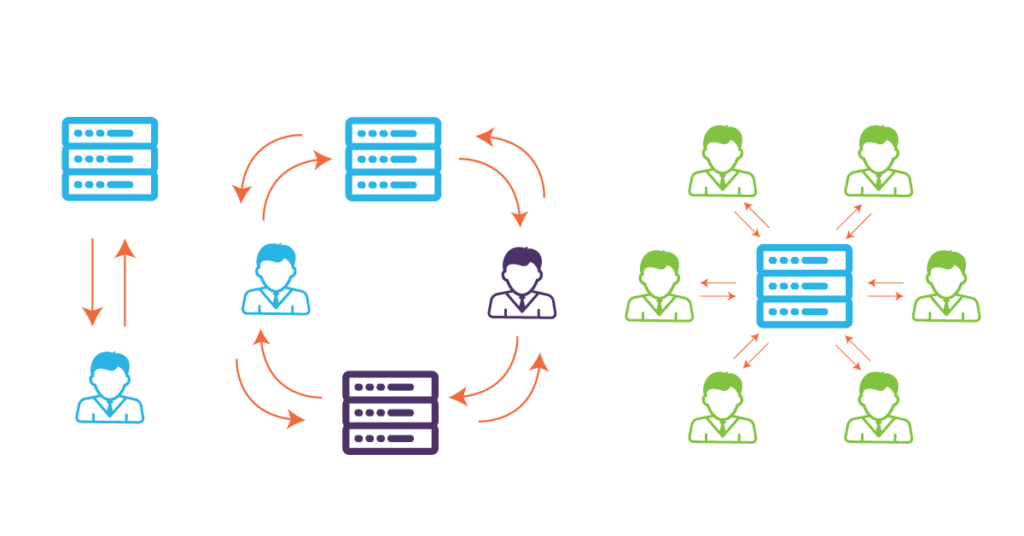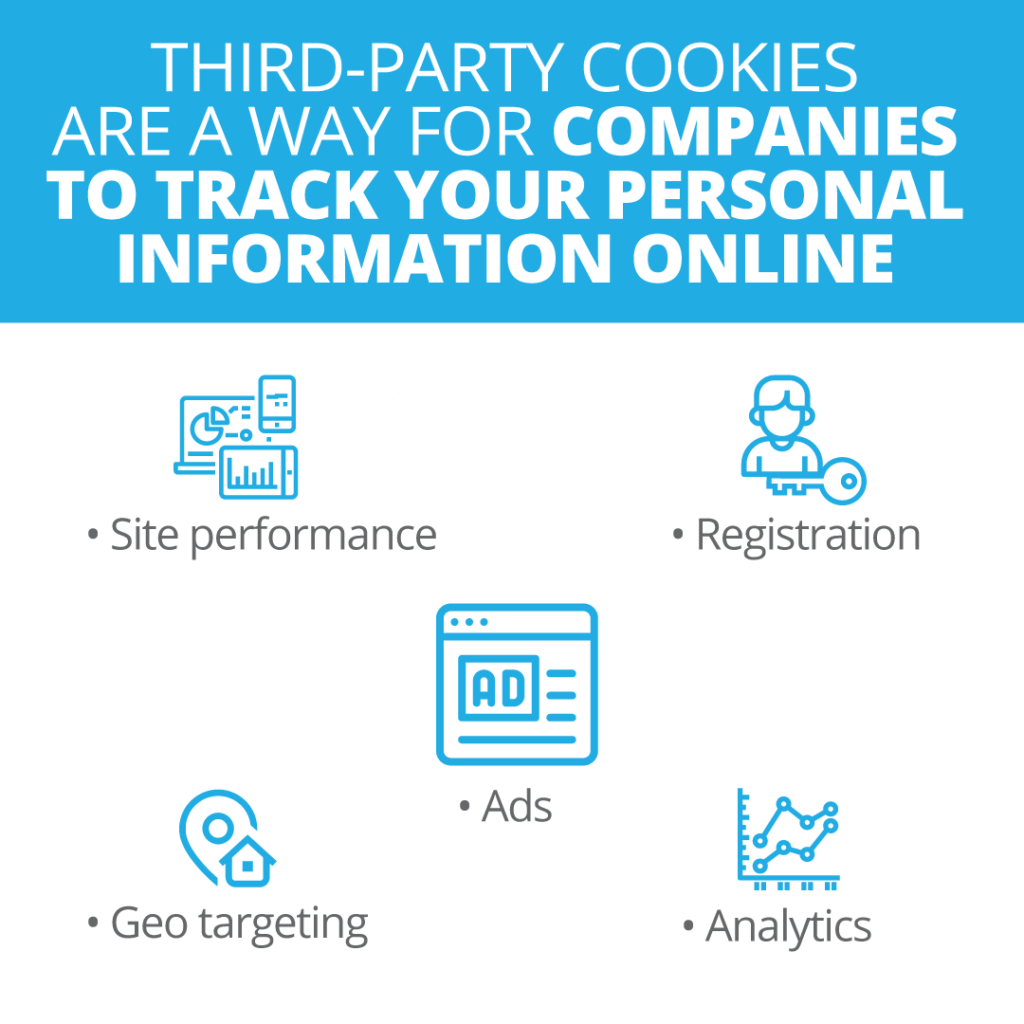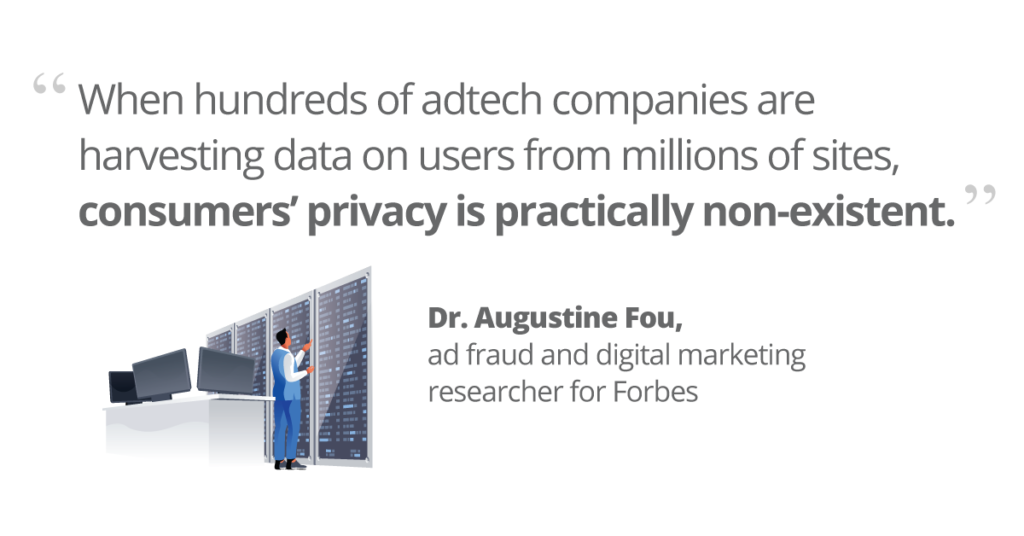
We’re not talking about your grandma’s chocolate chip cookie recipe going missing. Google Chrome has been taking steps to improve user privacy and eliminate third-party cookies.
While this is great news from a data privacy protection standard, it’s changing some of the digital marketing strategies most of us are used to.
However, living in a world without third-party cookies is possible. Here’s how digital marketers around the world are responding to this change and tips for you to thrive without the third-party help we’re all used to.
What You’ll Learn:
- What Are Third-Party Cookies?
- An Overview About Third-Party Cookies vs First-Party Cookies
- Laws About Third-Party Cookies
- Google’s Current Solution to Third-Party Cookies
- Ways to Transition to a Cookieless Web
- Ultimate Cookieless Checklist
- FAQs
What Are Third-Party Cookies?
Third-party cookies are a way for companies to track your personal information online. They are used in digital marketing to help improve ad targeting. When a user visits a website, another platform (hence – third party) places cookies on it to track every move that leads to a conversion and more.
Our Expert Insights on Third-Party Cookie Removal
When the news first broke that third-party cookies would soon be a thing of the past, a lot of digital marketers started panicking.
According to Simon Poulton, the Chief Data Officer here at Ignite Visibility, that panic may have been unfounded. “Third-party cookie deprecation has begun in Chrome … but, and this may be surprising, I’m bullish and not too concerned about what this means for Search, Social, SEO, etc. The only thing I can see it really affecting is Progammatic.”
It’ll be interesting to see where the digital marketing world goes from here but, for now, it’s time to start preparing for a third-party cookie-less world.
Actionable Tip: Test out how your website will perform after the third-party cookie phase-out is complete by adding “chrome://flags/#test-third-party-cook-phaseout” into your browser to enable the test. This will give you a lot of insights into how your site will specifically be affected.
Then, look into what you can do now to make up for the data you’ll lose when third-party cookies disappear for good. Beef up your first-party data collection and look into the various tools that Google is offering to help digital marketers manage the loss of cookies.
Third-Party Cookies vs First-Party Cookies
As Simon tells us, “Third-party cookies and first-party cookies are not the same. When you’re searching on Google, you’re being tracked by first-party cookies. The Google Pixel that is installed on your website to send data back to Google is also using a first-party cookie. Facebook, for example, is a walled garden of first-party cookies.
What all this means is that there will be no effect within Search or Social from this change. Indeed, enabling solutions like Enhanced Conversions are useful for ID resolution (particularly when it comes to first-party cookie purging, which is currently 7 days in Safari) but they are not tied to third-party cookie deprecation.”
Basically, first-party cookies will track you on a specific website, and only that website. For them to be active, a user has to agree to be tracked.
Third-party cookies, however, install a file on your computer and track you as you move around the internet. Often, users don’t agree to these cookies.
Why is Google Getting Rid of Third-Party Cookies?
Users want privacy. They don’t want their every move to be tracked.

Google Chrome Removing Third-Party Cookies for User Privacy Purposes
Because data privacy is such a huge issue, Google is using the removal of third-party cookies to combat it.
For example, an ad tech company might have their tracking code on literally millions of websites, and can therefore know what you’re looking at from morning until night. This is alarming considering the potential for use with the data.
Dr. Augustine Fou, Ad Fraud and Digital Marketing Researcher for Forbes
Since third-party cookies are so intrusive, they are, obviously, a big target in the fight for data privacy protection. Since it’s not easy for a user to see who is tracking them and there’s no real approval process, using them is a major concern.
As David Temkin, Director of Product Management, Ads Privacy and Trust at Google says, “People shouldn’t have to accept being tracked across the web to get the benefits of relevant advertising. And advertisers don’t need to track individual consumers across the web to get the performance benefits of digital advertising.”
Third-Party Cookie Removal (And Why It Matters)
While it’s making headlines now, Google’s Chrome is the last to make the move. The majority of other browsers, such as Safari, Firefox, and Brave, have already eliminated third-party cookies. In fact, Safari eliminated them several years ago with Intelligent Tracking Prevention.
So, while people are panicking about living in a cookie-less world, the truth is we’ve actually already been largely living in a “post-third-party cookie world” for some time now, and tracking persists.
That doesn’t mean that you should just sit back and watch it unfold, though. There are some things that you should do now before third-party cookies are totally a thing of the past.
Laws Surrounding Third-Party Cookies
Laws about third-party cookies are popping up everywhere.
According to EU data protection laws, cookies are considered “online identifiers.” This makes them subject to regulation.
Some examples of laws are as follows:
- The General Data Protection Regulation (GDPR) requires websites to inform users of what data their website collects.
- Privacy and Electronic Communications Regulations (PECR) maintain a standard of consent.
- In Canada, the Consumer Privacy Protection Act (CPPA) requires cookie consent.
- Yet another acronym, the California Consumer Privacy Act (CCPA) requires disclosure of what data the cookies collect and how they’re used.
- The Americans with Disabilities Act (ADA) has rules around cookie banners, which are difficult or impossible to get around for many users.

Consent Regarding Cookies in the UK
Google’s Current Solution to Third-Party Cookies
Like most big web changes, Google has a solution to the death of third-party cookies.
Enter Google’s Tracking Protection. This program allows developers to test the readiness of the web, without third-party cookies. This new program was rolled out to 1% of users at the beginning of 2024 but Google is on track to make sure it protects all users by the end of 2024.
Google says they are going to help privacy-safe ways to replace the data that we used to get through third-party cookies. The following AI tools will also help digital marketers weather this storm and come out unscathed.
Tagging
Using Google Tag Manager, you can add measurement codes and related code fragments, or tags, to your website or mobile app. Working alongside triggers and variables, these tags work as tracking pixels that can be embedded into your site to help obtain the same information and data that used to be obtained through third-party cookies.
Consent Mode
With the help of Google’s Consent Mode, you can ask your users for consent to receive tracking information on particular sites. Content Mode can be used in conjunction with Google Analytics, Google Ads (including Google Ads Conversion Tracking and Remarketing), Floodlight, and Conversion Linked. Consent Mode support for Phone Call Conversions is currently pending.
Enhanced Conversions
Located within the Google Ads dashboard, Enhanced Conversions works to improve the accuracy of your conversion measurements, both on your website and offline. Using this tool, you can unlock more powerful bidding.
Google Analytics 4
With the roll-out of GA4 came more tracking and data abilities. Part of that includes setting up Events to track particular user actions to obtain important information.
While these tactics are great ways to get the data you need, you’re going to want to lean into your first-party data to help you make better targeting decisions and improve your conversion rates. This will be more complicated in some industries than others, but as long as you have a great tracking tech stack, you should be able to weather this storm.
How to Transition to a World with No Third-Party Cookies
In sum, the sky is not falling. In fact, Simon Poulton tells us that “paid search, organic search, and paid social data will continue to show up in Google Analytics just as it has before.” He would “ONLY be concerned about this if [he] owned a programmatic advertising network.”
As he stated, “I’d be slightly concerned if I did a lot of programmatic buying to very granular audiences, but again, programmatic advertising still works across Safari and Firefox to this day because they have alternative identifiers already built in.”
To help you get adjusted to a third-party cookieless world, the first thing to do is to switch gears now by investing in a first-party data strategy and start collecting data from the customers themselves.
In between first- and third-party data is second-party data, which exists privately between two people (like a client and agent, for example). Obviously, second-party data isn’t used for advertising for this reason, so first-party data is the way to go.
Google Tag Manager helps acquire first-party data. Think with Google suggests a way to do this: building relationships with website users.
This is going to make value even more important because you’ll need to offer something in return for the data. I can see content marketing across the board growing in relevance as we speak! Other tools like a convenience factor, loyalty programs, and deals or coupons will also be relevant.
You’ll also want to develop additional metrics besides conversion tracking to get a thorough understanding of your audience and how they interact with your ads.
Increasing your reliance on cloud technology will be the cutting-edge solution in a world with no third-party cookies. Honed software will help you make sense of the data you have and predict outcomes for future campaigns. Additionally, you can use it to keep the data you do have safe. One example of this is the Google Analytics for Firebase software development kit (SDK).
While you’re at it, shy away from old faves that won’t be status quo for much longer:
- Audience lists and personalized ads
- Ad frequency management tactics
- Performance measuring tools like conversion tracking
Ultimately, doing away with third-party cookies won’t entirely produce unshakeable data privacy protection because browser fingerprinting (where ad tech moguls store data on their servers instead of the browser itself) is already in practice.
However, there’s evidence to suggest that behavioral targeting is not as lucrative as it seems—which is why first-party targeting, content strategies and inter-funnel tactics take the leads.
Your Third-Party Cookieless Checklist
Here’s a five-part checklist to tackle ahead of Chrome’s third-party cookie removal:
1. Build Your Own First-Party Data Collection
You’ll want a robust, flexible and growing collection of first-party data. First-party cookies are those within the website. These aren’t going anywhere, and they still require overt user approval to go into effect. First-party data can come from mobile apps, landing pages, social media, emails, surveys, gated content, and more. Start with the Google Tag Manager to begin acquiring first-party data.
Also focus on zero-party data, or optional info the user chooses to provide. Make sure your value exchange is worth it or you may not get voluntary data. Lead generation campaigns, custom questions, and brand-building solutions can help you deliver value.

First-Party vs. Second-Party vs. Third-Party Data
2. Use Server-Side Tracking
Server-side data management (aka cloud delivery) features a pixel that sends data to your server. From there, your server passes it on to the destination server.
Server-side data is when “one, central system functions to collect all data, then that system relays data to third-party vendors.”
Server-side data can be a solid tool in your cookieless checklist.
3. Develop the Best Ad Creative
You can’t escape bad ad creative. Make sure yours is the best of the best.
Provide value to your audience by creating meaningful connections through ad creative. Otherwise, you may as well be speaking to a wall.
4. Use Tools
Increasing your use of cloud technology will be the cutting-edge solution in a world with no third-party cookies.
Honed software will help you make sense of the data you have and predict outcomes for future campaigns. You can also use it to keep the data you do have safe.
5. Implement, Test, and Prepare for Change
You’ll need to continuously test out different methods to succeed in a post-cookie landscape.
Start now. Don’t get caught empty-handed when cookies are officially gone.
Google says during Stage 1 of its process to phase out third-party cookies, “Publishers and the advertising industry will have time to migrate their services. We expect this stage to last for nine months, and we will monitor adoption and feedback carefully before moving to Stage 2.”
FAQs About Google Chrome Eliminating Third-Party Cookies
1. Will the elimination of third-party cookies make advertisers suffer?
Not really. It just requires a pivot and a shift in mindset. You’ll still have access to third-party tracking codes, just not cookies. Plus, it’s a chance for you to prioritize first-party data, which is a much more lucrative strategy for data allocation in terms of your ROI.
2. When is Chrome removing third-party cookies?
Google started the third-party cookie removal process in January 2024. The rollout is expected to be completed by the end of the year.
3. Do other browsers use third-party cookies?
The list of browsers saying goodbye to third-party cookies is actually growing, especially since Google’s initial announcement. However, they weren’t the first to start this process. Apple Safari and Mozilla Firefox actually began phasing out third-party cookies in 2013.
How to Move On From Third-Part Cookies with the Help of Ignite Visibility
Whether you’ve started developing a third-party cookie-less strategy or you need some help, Ignite Visibility is here for you!
We can help you:
- Develop strategies to increase first-party data collection
- Make sense of the death of third-party cookies
- Make the most of the data you can collect
- Build a tracking tech stack that will help you navigate your industry successfully
- And more!
Since we’ve heard the third-party cookies news, we’ve been working hard to find solutions and develop tech stacks to help move businesses in every industry forward. If you need some help moving into this new phase of digital marketing, reach out!

